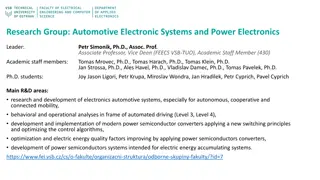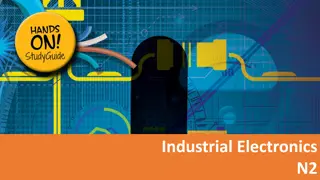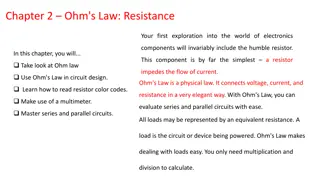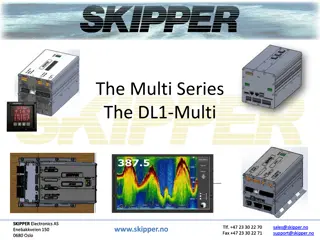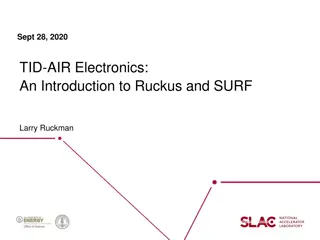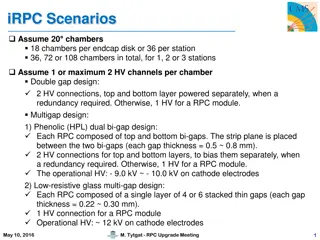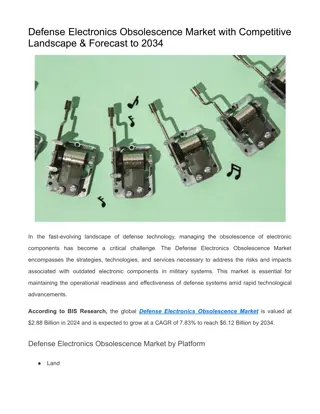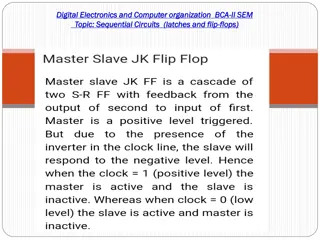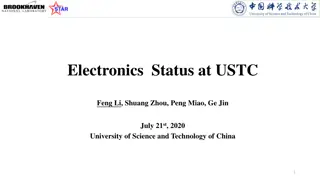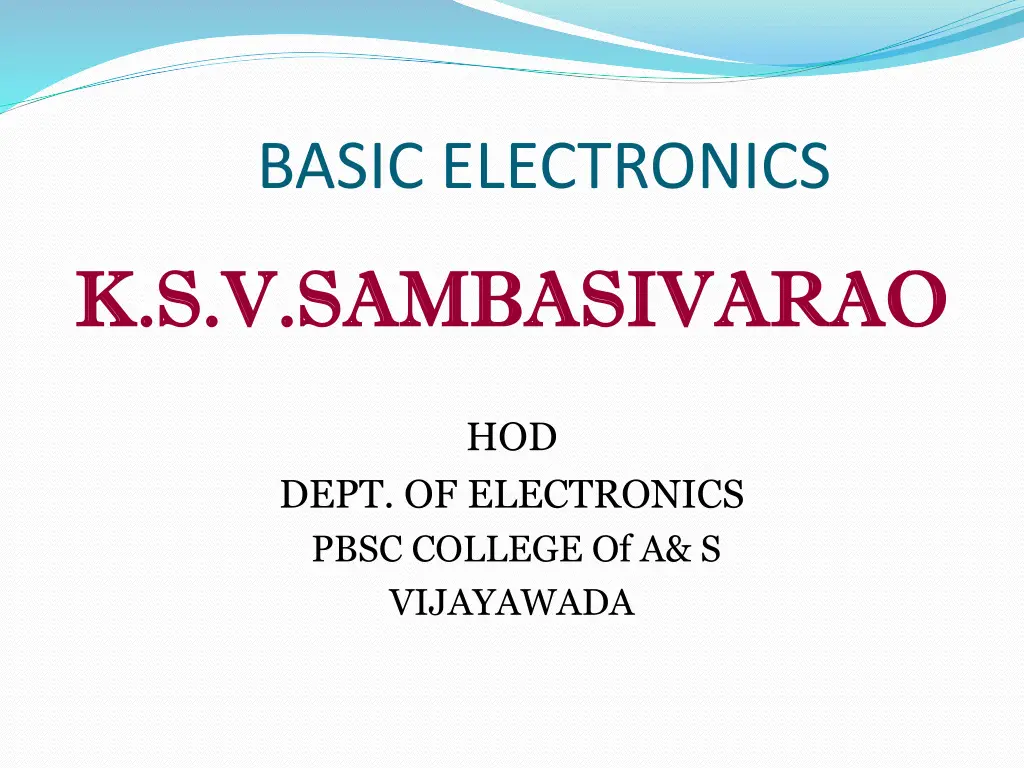
Understanding Transistors and FET in Basic Electronics
Explore the world of transistors in basic electronics, covering common configurations like Common Base, Common Emitter, and Common Collector. Learn about Field Effect Transistors (FET) and their conventional symbol types, along with the three terminals of FET. Delve into the functionalities and characteristics of these essential semiconductor devices.
Download Presentation

Please find below an Image/Link to download the presentation.
The content on the website is provided AS IS for your information and personal use only. It may not be sold, licensed, or shared on other websites without obtaining consent from the author. If you encounter any issues during the download, it is possible that the publisher has removed the file from their server.
You are allowed to download the files provided on this website for personal or commercial use, subject to the condition that they are used lawfully. All files are the property of their respective owners.
The content on the website is provided AS IS for your information and personal use only. It may not be sold, licensed, or shared on other websites without obtaining consent from the author.
E N D
Presentation Transcript
BASIC ELECTRONICS K.S.V.SAMBASIVARAO K.S.V.SAMBASIVARAO HOD DEPT. OF ELECTRONICS PBSC COLLEGE Of A& S VIJAYAWADA
TRANSISTORS A transistor is a semiconductor device used to amplify or switch electronic signals and electrical power. It is composed of semiconductor material usually with at least three terminals for connection to an external circuit.
The three different transistor configurations are: Common Base (CB) Common Emitter(CE) Common Collector(CC)
Common Base(CB): This transistor configuration provides a low input impedance while offering a high output impedance
Common Collector(CC): This transistor configuration has the collector terminal of the transistor common between the input and the output terminals . This offers high input impedance, low output impedance, voltage gain less than one and a large current gain
Common Emitter(CE): In this configuration, the emitter terminal is common between the input and the output terminals . This configuration offers medium input impedance, medium output impedance, medium current gain and voltage gain.
FET(Field Effect Transistor): FET is a transistor, where output current is controlled by electric field. FET sometimes, is called uni-polar transistor as it involves single carrier type operation. The basic types of FET transistor is completely different from BJT transistor basics.
Three terminals of FET: Source (S): which the carriers enter the channel. Conventionally, current entering the channel at S is designated by IS. Drain (D): which the carriers leave the channel. Conventionally, current entering the channel at D is designated by ID. Drain-to-source voltage is VDS. Gate (G): The terminal that modulates the channel conductivity. By applying voltage to G, one can control ID.
UJT (uni junction transistor ): A unijunction transistor (UJT) is a three- lead electronic semiconductor device with only one junction that acts exclusively as an electrically controlled switch. The UJT is not used as a linear amplifier.
The time peroid is: The value of the timing resistor, R3is calculated as:
Op-AMP(Operational Amplifier) An operational amplifier (often op-amp or opamp) is a DC-coupled high-gain electronic voltage amplifier with a differential input and, usually, a single-ended output.
Applications of op-AMP: Op Amps and Op Amp Circuits. ... Op amps are used in a wide variety of applications in electronics. Some of the more common applications are: as a voltage follower, selective inversion circuit, a current-to-voltage converter, active rectifier, integrator, a whole wide variety of filters, and a voltage comparator The Voltage Gain (AV) of the operational amplifier can be found using the following formula
:Operational Amplifiers Bandwidth: The operational amplifiers bandwidth is the frequency range over which the voltage gain of the amplifier is above 70.7% or - 3dB (where 0dB is the maximum) of its maximum output value as shown below.
Block diagram consists of 4 stages: Input stage Mid stage Level shifter Output stage
Input stage: It is having dual input and balanced output and used to provide voltage gain to an Op-Amp and it decides input resistance. Mid stage: It is having dual input and unbalanced output. It provides additional voltage gain to the input signal. Level shifter: In this emitter coupled logic circuit is used so that it provides the dc level to zero voltage level with respect to ground. Output stage: In this complimentary push pull circuit is used so that it provides low output resistance.
Inverting amplifier: Inverting Operational Amplifier. ... Negative Feedback is the process of feeding back a fraction of the output signal back to the input, but to make the feedback negative, we must feed it back to the negative or inverting input terminal of the op-ampusing an external Feedback Resistor called R .
Non-inverting amplifier: In this configuration, the input voltage signal, ( VIN) is applied directly to the non-inverting ( + ) input terminal which means that the output gain of theamplifier becomes Positive in value in contrast to the Inverting Amplifier circuit we saw in the last tutorial whose output gain is negative in value.
Op-amp Oscillator: The Op-amp RC Oscillator. When used as RC oscillators, Operational Amplifier RC Oscillatorsare more common than their bipolar transistors counterparts. The oscillator circuit consists of a negative- gain operational amplifier and a three section RC network that produces the 180ophase shift.


